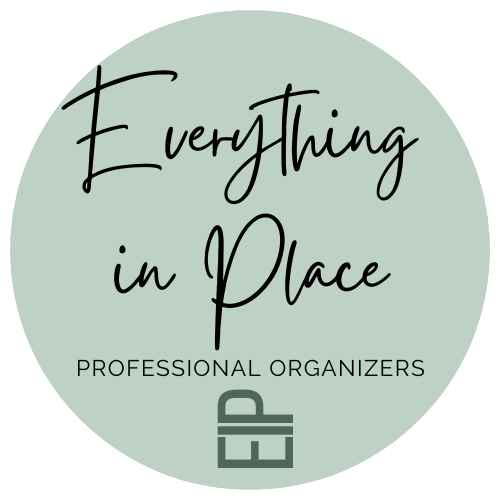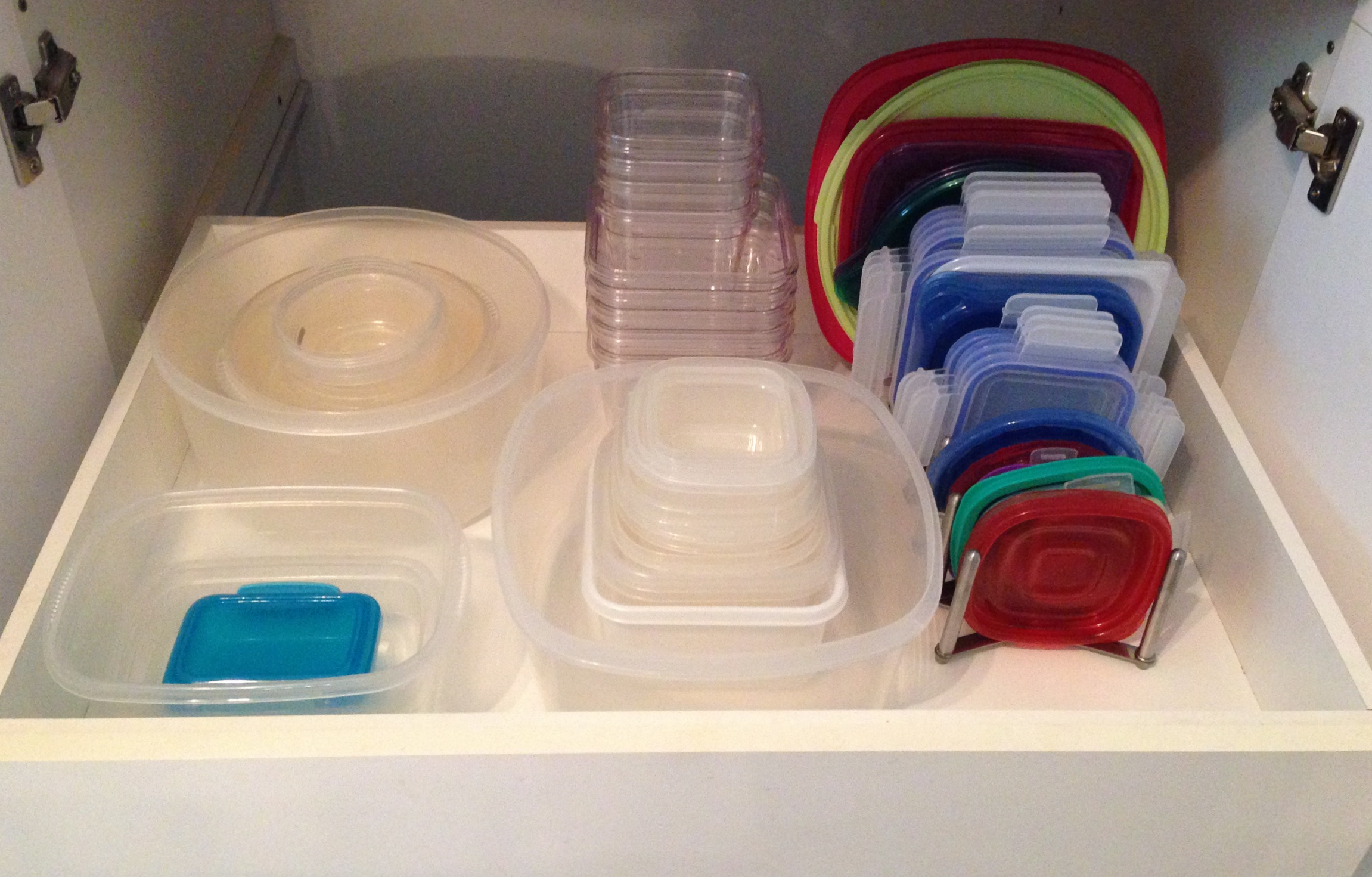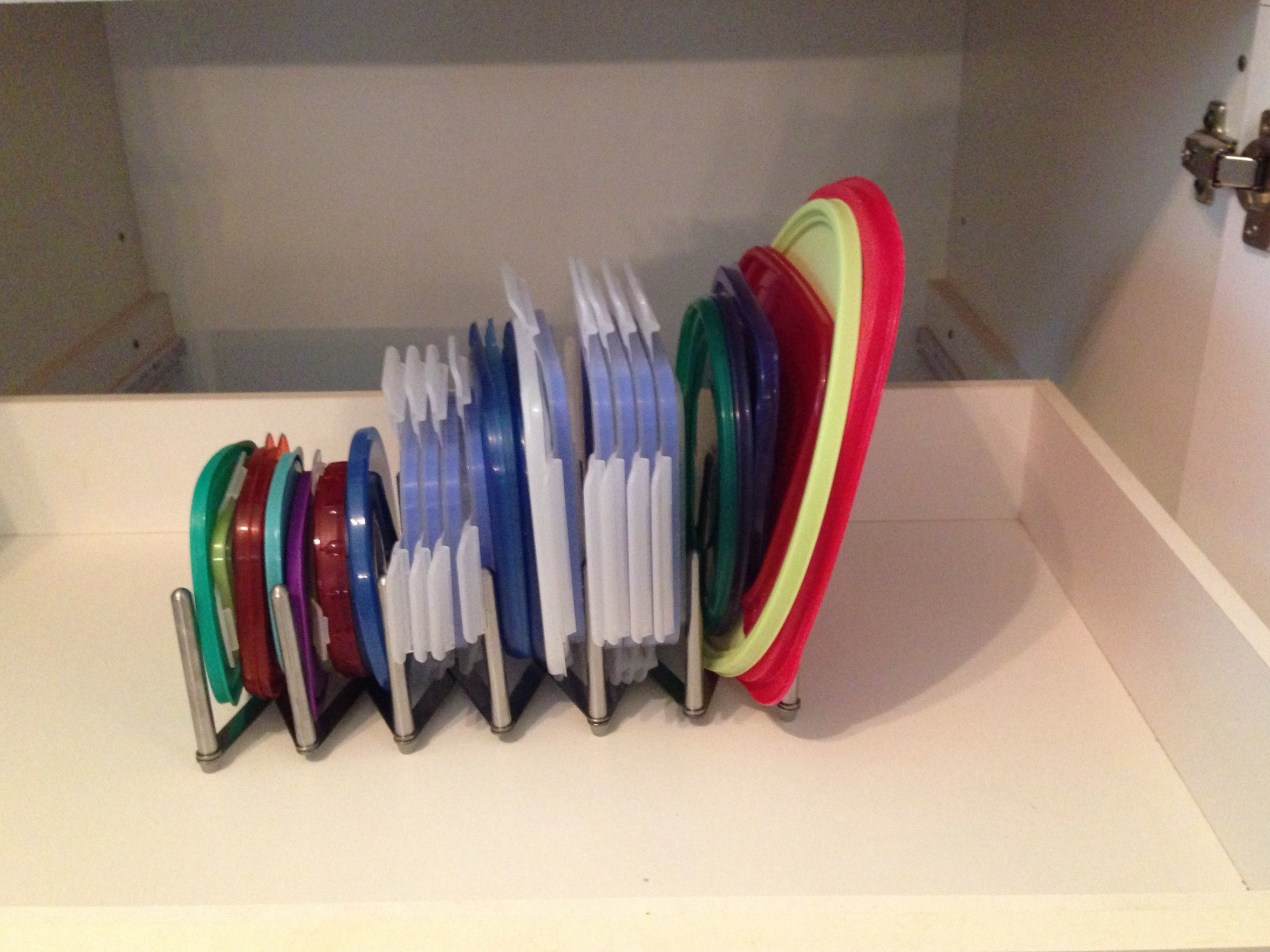As seen in Huffington Post
My last post tackled starting small with your organizing as a way to motivate you onto the bigger projects. I focused on steps you can use to tackle the often forgotten about space under the sink, but really you can apply those steps to other spaces that need a bit of love. Since one of the biggest questions I get is “How do you keep your home organized” I thought you might appreciate a look into my home. Particularly under my sink and how I deal with it when it is no longer working.
The space wasn’t a disaster but definitely needed an update. It’s always a good plan to identify what your problem is before going in to fix it. My two biggest issues were that: 1. We use a lot of washcloths to wipe kid’s face and hands and the dirty ones kept congregating on the counter until I got fed up enough to bring them to the laundry room. 2. The stackable bins I was using wouldn’t stay stacked and what I had in them wasn’t accessible enough for me.
The third issue was that no one other than me was really maintaining my system. What was intuitive to me wasn’t as straightforward to my husband and my kids couldn’t grab a washcloth or hand towel with turning everything upside down.
I had a few minutes one day and decided to deal with this space. So out everything came and the inside got a thorough wipe down. Once all the products came out and they were sorted I took inventory of what I really needed to keep there. I have to admit, since I had already pared down what was stored there some time ago the list wasn’t very long. My biggest challenges was really getting everything back under the sink in a way that A. made sense for how I used it and B. was going to be maintained by others.
With a husband, a 5 year old and 3 year old this was no small feat. Clearly what I was doing before wasn’t working so I decided to keep it simple. Very simple. The most used items needed to be right in front and it needed to be SUPER clear where things went.
The recycling bin was a non-movable. It’s the most convenient and out of sight spot for us to have it. Unfortunately that means I lose about half my space. Saving the earth takes sacrifice! I picked up a small plastic shelf from the dollar store and grabbed some bins that both fit what I needed to store and could go in the space the shelf allowed for.
My under the sink essentials are washcloths, kitchen towels, dish sponges, clothes to clean the counter and dishwasher detergent (because we seriously run that thing once a day!) I also needed a convenient spot to put all the dirty cloths and towels so they wouldn’t end up on the counter. Since my kids can’t read yet, I realized that not only did I have to label them but they needed to be in different containers so I could identify them to my children. Oh, you need a washcloth? That’s in the clear bin. You took my hand towel to clean the water you spilled all over the floor because your toys need a bath? No problem, just throw it in the green bucket.
So back everything went into it’s clearly designated space. I also store a few items that only I really use behind the shelf. Special cleaner for the stovetop, white vinegar and the cleaning concentrate I use to make up the spray I use on the counters. You’ll notice I don’t really store cleaning products under the sink. Over the years I have really pared down what I use in the kitchen. I only use dish soap and a spray for the counters and they both stay up top in a tray next to the sink. The amount of times my children literally lick food off the table has made me very careful about what I use to clean.
The last part of this space is the inside of the doors. I didn’t change anything around this time but I do use them to hang rubber gloves (which I wear only if my nails are done which unfortunately is very infrequently, they usually get nabbed by my three year old when she plays dress-up) and a place for the plastic bags that we accumulate.
I did this under the sink update a little over two months ago and haven’t had an issue since. Yes the occasional washcloth or dirty towel still finds it’s way to the counter but that’s just life. It really is the small changes that make a big difference. When you see how much positive can come out of a few small changes it can be very motivating to tackle some slightly bigger projects.
Happy Organizing! If you want to send me a peek under your kitchen sink get in touch here.









